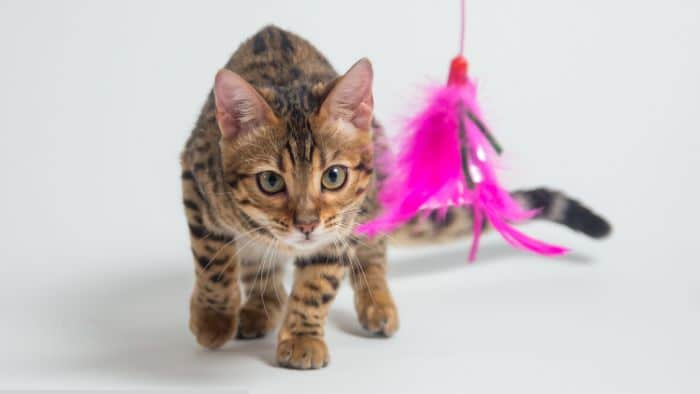How Long Should You Play With Your Cat Each Day?

A Simple Guide to Keep Your Cat Active and Happy
One of the joys of having a cat is spending time playing together. But how much playtime is enough each day? The answer depends on your cat’s age, breed, and health. Here’s a breakdown to help you find the right balance.
1. Age: Different Stages, Different Needs
Kittens (2–6 months): Very energetic and curious. Play 3–4 times a day, with each session lasting 15–20 minutes. Use toys like feather wands and plush mice to mimic hunting.
Adult cats: Play 2–3 times a day for 20–30 minutes. Try laser pointers, treat balls, or interactive toys to keep them interested.
Senior cats: Lower energy and joint stiffness mean gentler play. 1–2 short sessions a day (10–15 mins), using slow-moving toys or scent games, is ideal.
2. Breed: Every Cat is Different
Some active breeds, such as Abyssinians or Bengals, require more playtime—40–60 minutes daily. Use climbing trees, obstacle courses, or chase games to engage your child.
Calmer breeds, such as Persians or Exotic Shorthairs, require less—20–30 minutes of gentle play. Soft toys or slow chases work well.
Siamese cats love human attention, so they spend more time talking, petting, and bonding through play.
3. Health: Adjust Based on Condition
Healthy cats can follow normal routines.
Sick or recovering cats need less play and more rest.
Overweight cats need more play to burn calories—try 15–20 minute sessions multiple times a day with chasing or fetch.
Cats with chronic conditions, such as arthritis or heart disease, should avoid intense activity. Keep sessions short (10–15 mins), calm, and comforting.
4. Interaction Quality: More Important Than Time
It’s better to have short, focused play than long, distracted sessions.
Watch your cat’s interest and switch toys when they lose excitement.
Use a gentle voice and offer praise or petting between games.
Playtime can also be used for simple training, such as fetch, commands, or tricks, to build trust and stimulate their minds.
Final Thoughts
The ideal playtime varies depending on age, breed, and health, but quality is most important. Find the rhythm that fits your cat, and play in a way that keeps both body and heart happy. You’ll build a stronger bond and a healthier, happier cat.
